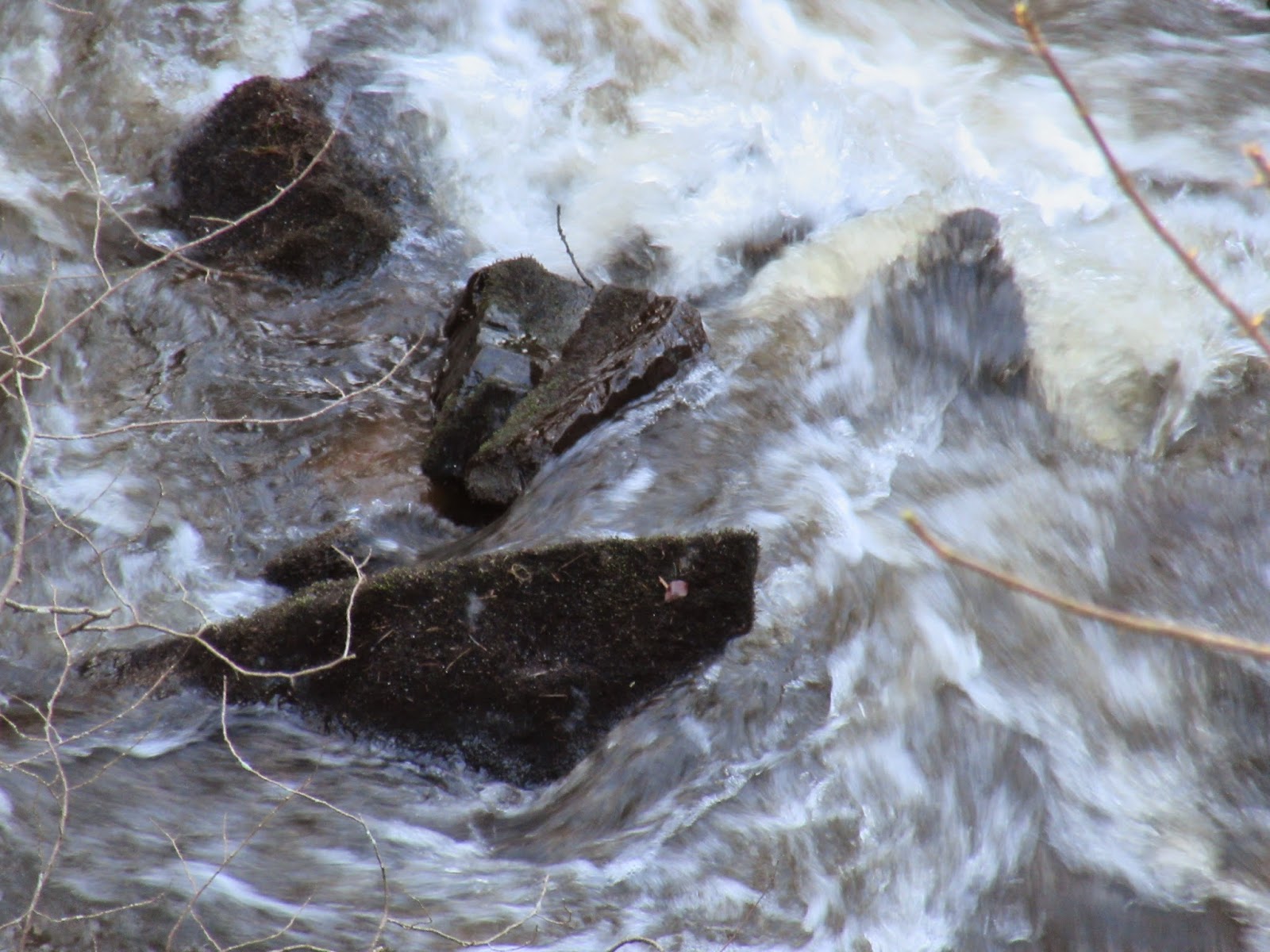On Wednesday 11 March, during my
Following the River mini-residency
with
Dunbeath Heritage Centre, I’ll be joining the Helmsdale-based arts
organisation Timespan on a walk to the monastic site at Ballachly just west of
Dunbeath. For Timespan this walk is part of their project
58° North -A Modern Pilgrimage Around the Globe,
a journey to discover the creative communities which share with Helmsdale their
latitude, coastal setting and population size. For me, this collaboration is an
opportunity to explore the ideas in Neil Gunn’s Highland River from a slightly
different angle.
Though few people use the term pilgrimage, a lot of Gunn’s critics
allude to this idea when they discuss his novel Highland River. In my view, the
journey of the adult Kenn is a pilgrimage as the main character senses an immense
urge to find the source of the river - ‘the source of being, of all being’ as
Dairmid Gunn writes in the introduction to the novel - and this journey is - what
this author calls - positive and
life-enhancing.
More then ten years ago, when I still lived in The Netherlands,
I walked parts of the Way of St. James to Santiago de Compestela in the northeast
of Spain. I carefully mapped my route from my hometown to the Spanish city,
read many accounts of people who had done so before me and learned about the
key cathedral towns en route. On my
way, I delighted in visiting churches and monasteries, and encountering signs
of the scallop shell that affirmed I was on the right way. And I was in good
company. Above all, my memories of the pilgrimage are infused with the kindness
of people who recognised me as a pilgrim and with the conversations with fellow
pilgrims who shared my path for a few minutes, hours, sometimes even several
days.
A few weeks ago I read an account by Celeste Ray about pilgrimages
to Ireland’s holy wells in
Landscapes Beyond Land, a book edited by the
anthropologist Arnar Arnason and colleagues. She describes how Irish
communities visit holy wells to venerate the saints associated with them. On
the way to the wells these pilgrims visit stations to pray. At the actual well,
pilgrims leave votives such as strips of cloth tied to nearby trees and bushes
as a plea to the saint for health and
wellbeing for themselves or those close to them. Similar to pilgrims on the Way
of St. James, pilgrims to these holy wells follow an established route along
which they carry out specific
religious
practices as have many people done before them.
It is not hard to see that Kenn’s journey to the source of
the river is different from the above religious pilgrimages. I choose, however,
to call Kenn’s walk a pilgrimage too. That said, for Kenn the pilgrimage is a
personal and his destination is one of personal choice rather than one carrying
religious significance. Whereas religious pilgrimage is undertaken for the
fulfilment of some prayer, Kenn’
s - and my own walk to the source of
Gormack Burn - is a journey of discovery and reflection. I would even argue that the
path of personal growth involved has become more important than actually
reaching the destination. What’s more, the pilgrimage started long before Kenn
embarked on the actual walk as it was the strength he derived from his
childhood memories of the Highland river when he was in the trenches during the
World War I, that ultimately urged him to embark on his walk to the source of
the river. From my own pilgrimage along the Way of St. James I’ve learned that
the discovery and reflection related to pilgrimage not only precedes and
coincides with the physical journey, but also extends well beyond the arrival at
one’s physical destination.
I’m interested in learning more about Timespan’s
understanding of pilgrimage in the context of their 58
° North project. If you want to
join us in our
conversation on Wednesday 11 March,
please email Jacquie Aitken at enquiries@timespan.org.uk.
Copyright text and image Petra Vergunst
 There
is now the opportunity to join the Facebook group Pen, Pencil, Paper where
you’ll find like-minded people who give each other feedback to work produced in
response to fortnightly prompts. I am a community artist mainly working in the
mediums of music and creative writing. My interest in visual arts and drawing
has been long-standing but because of family and work commitments I’ve found it hard to join regular drawing sessions. My resolution for 2015 was to
improve my drawing skills and I hope to do so through this Facebook group.
There
is now the opportunity to join the Facebook group Pen, Pencil, Paper where
you’ll find like-minded people who give each other feedback to work produced in
response to fortnightly prompts. I am a community artist mainly working in the
mediums of music and creative writing. My interest in visual arts and drawing
has been long-standing but because of family and work commitments I’ve found it hard to join regular drawing sessions. My resolution for 2015 was to
improve my drawing skills and I hope to do so through this Facebook group.



